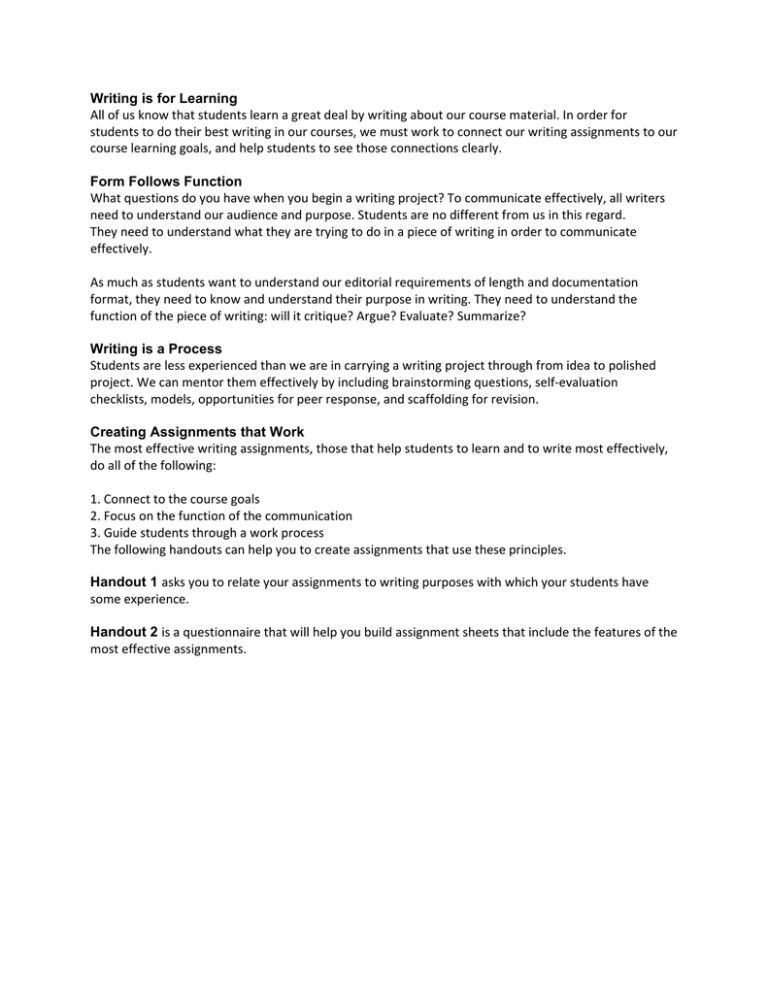Writing is for Learning All of us know that students learn a great deal by writing about our course material. In order for students to do their best writing in our courses, we must work to connect our writing assignments to our
advertisement

Writing is for Learning All of us know that students learn a great deal by writing about our course material. In order for students to do their best writing in our courses, we must work to connect our writing assignments to our course learning goals, and help students to see those connections clearly. Form Follows Function What questions do you have when you begin a writing project? To communicate effectively, all writers need to understand our audience and purpose. Students are no different from us in this regard. They need to understand what they are trying to do in a piece of writing in order to communicate effectively. As much as students want to understand our editorial requirements of length and documentation format, they need to know and understand their purpose in writing. They need to understand the function of the piece of writing: will it critique? Argue? Evaluate? Summarize? Writing is a Process Students are less experienced than we are in carrying a writing project through from idea to polished project. We can mentor them effectively by including brainstorming questions, self‐evaluation checklists, models, opportunities for peer response, and scaffolding for revision. Creating Assignments that Work The most effective writing assignments, those that help students to learn and to write most effectively, do all of the following: 1. Connect to the course goals 2. Focus on the function of the communication 3. Guide students through a work process The following handouts can help you to create assignments that use these principles. Handout 1 asks you to relate your assignments to writing purposes with which your students have some experience. Handout 2 is a questionnaire that will help you build assignment sheets that include the features of the most effective assignments.

